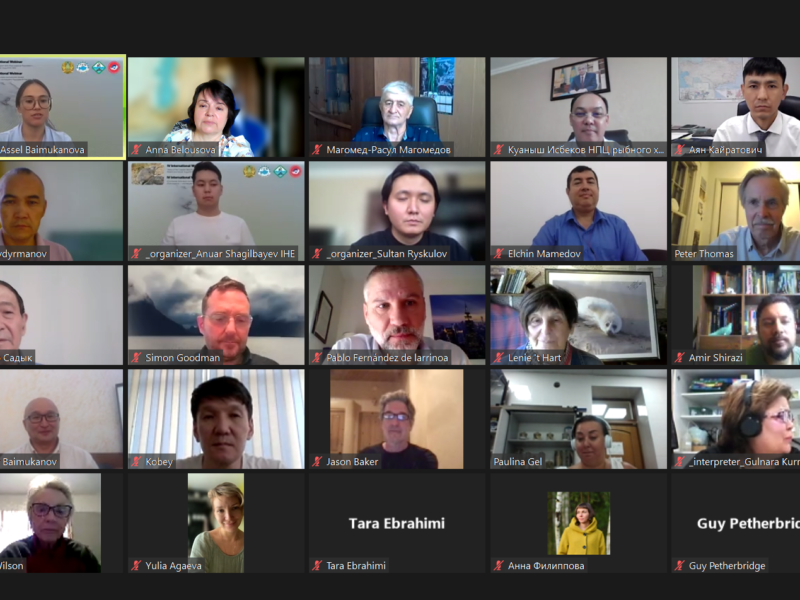Recently, an international webinar “The state of the Caspian seal population in the present and future” was held in a hybrid format. The event was attended by representatives of research centers and experts on biodiversity of five countries of the Caspian region, including Turkmenistan, the newspaper “Neutral Turkmenistan” reports.
During the webinar, the results of accounting and the state of the population of the Caspian seal, which is endemic to the Caspian Sea, were discussed. It was noted that monitoring the number and habitat conditions of seals within the Turkmen sector of the sea is a priority task of researchers and inspectors of the Khazar State Nature Reserve of the Ministry of Environmental Protection of Turkmenistan.
Ecologists conduct annual observations within the protected area, on the Khazar, Esenguly sites, and in the Ogurdzhaly Nature Reserve. It is important to note that reproduction of the seal takes place in winter in the northern part of the sea, mainly on ice floes. The young seals then migrate to the south with their mothers to fatten up and gain weight.
A total of 55 seals were counted in the Turkmen waters of the Caspian Sea from January to October 2022, including 44 adults and 11 young animals.
Currently, ecologists of the region have identified important territories for all stages of the life cycle of the Caspian seal, including breeding, molting, migration and feeding, which also included sections of the Turkmen coast.
The Caspian seal is a unique species that plays an important role in the Caspian ecosystem. However, the seal population is under threat due to a number of factors, including climate change.
According to the All-Russian Research Institute of Environmental Protection, the agenda of the the webinar covered such issues as the analysis of monitoring data on the number, mortality and distribution of the Caspian seal, the impact of sea regression and climate change, the detection of marine debris and microplastics in the ecosystem of the coast and coastal waters of the Caspian, its sources and possible impact on the seal population, development of a common program for monitoring the number and condition of the Caspian seal by the Caspian countries.
Recommendations on how to chip seals and identify chip numbers were also presented.
Considering the current data on climate change, which is leading to an increase in the number of warm winters and a decrease in the level of the Caspian Sea, the participants of the webinar spoke in favor of developing joint actions to help the species adapt to changing environmental conditions.
Such measures include the preservation of seal rookeries and the creation of a science-based system of measures to protect the most important habitats of the species’ life cycle.
In particular, Anna Belousova, Head of the Red Book Laboratory at the All-Russian Research Institute of Environmental Protection, proposed that the Red Book of the Caspian Basin be prepared using the approaches of the IUCN Red List and the positive experience of the Caspian Sea countries. ///nCa, 18 August 2023 [photo credit – All-Russian Research Institute of Environmental Protection]
#Caspian_sea, #Caspian_seal, #ecology, #environment, #Turkmenistan

